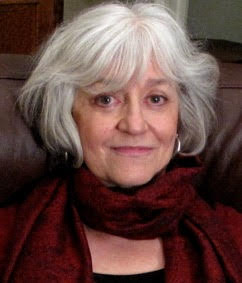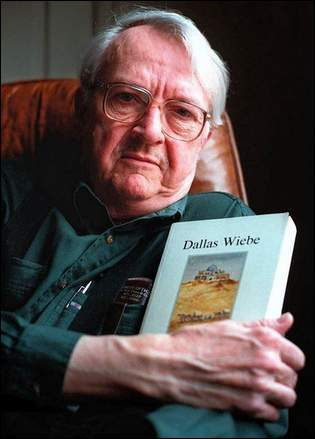Literary Art in Worship
In This Issue
For the past few decades, writers from Mennonite contexts have been receiving recognition from the literary world for their poems, stories and plays. But what of the reverse—is there a place for literary art in Mennonite places of worship? What are the possibilities of bringing home the work? Certainly not every literary work belongs in worship, but opening a space for literature in worship can open new possibilities for participation and meaning. In this issue we hear from a literary scholar, a pastor, several poets, and two seminary professors who reflect on the meaning of words in worship.
In the fall of 2004, I went on an east coast reading tour for A Cappella: Mennonite Voices in Poetry with poets Di Brandt and Julia Spicher Kasdorf. One of our readings took place at the 15th Street Friends’ Meetinghouse in Manhattan, graciously hosted by Malinda Berry, a student at Union Theological Seminary at the time. After we each read poems from the anthology, we turned to the audience and invited anyone who had brought poems to an open mic reading. One young woman had just come from a creative writing class. She had not intended to read, but was persuaded to share her reflection on her grandmother’s hands with us. In the flickering candlelight we imagined with her the polished wrinkles, the tender skin of these hands marked by work and care. Afterwards she made the comment, “I didn’t know that poetry could be read in church.” At that moment, I decided that I would direct some of my energy towards bringing back the gift of poetry to the community that had nurtured the poets. I didn’t want to have such talented writers believing that their art could only flourish outside the church. This issue is a fruition of that desire to bring the words back into the space in which we honor the Word and source of creativity.
Sheri Hostetler’s essay, “Poetry as Contemplation,” was written a number of years ago in response to a call for essays from the poets in the anthology A Cappella: Mennonite Voices in Poetry. The final version of the anthology did not include the essays, but the language and phrases of Sheri’s essay stayed with me and I found myself quoting it in several of my own talks and articles. I am pleased that her essay, revised to incorporate her path from poetry to pastoring, has found a home in print in this issue. Sheri is also a fine poet, and in addition to the poems published in A Cappella—some of which have found their way onto Garrison Keillor’s "The Writer’s Almanac"—she has written poetry for worship. Several of these poems, along with a description of the writing prompts that created them, are also published here for the first time. I hope this will inspire more worship teams to include creative writing in their services.
Dallas Wiebe, a seminal voice in Mennonite Literature, known primarily as a novelist and short story writer, turned to poetry at the end of his career and published several startlingly powerful volumes on religious themes: On the Cross (Cascadia 2005) and Monument: Poems on Death and Dying (Sand Hills 2008). Hildi Froese Tiessen’s essay about her experience of incorporating Wiebe’s poetry into worship illustrates the ways in which poetry can serve to open up new possibilities for honesty and connection. Three of Wiebe’s poems, chosen from Monument by Froese Tiessen—who is also one of its publishers—are reprinted in this issue.
Malinda Elizabeth Berry and Rebecca Slough both reflect on the role of literature in worship from theological perspectives. Berry, Director of the M.A. Program at Bethany Seminary in Richmond, Indiana explores the potential she sees for literature to play a role in the regeneration of Anabaptist theology. Aware of the complexity and interpenetration of religious, cultural, and artistic symbols, she concludes with a layered image of the cross as interpreted by Toni Morrison. In her essay, “What Language Shall We Borrow,” Rebecca Slough, Dean of Associated Mennonite Biblical Seminary in Elkhart, Indiana, brings us back to the “Word” and reminds us that in a worship service rooted in scripture, hymns and poems can complement and deepen our reverence for the Word. Her essay offers strategies for renewing our relation to words, and will be of especial value to those who attend to the Word as they select complementary texts for worship.
Finally, A Cappella: Mennonite Voices in Poetry (Univ. of Iowa 2003) remains an excellent source of poems for worship, and many of the writers anthologized in that volume have gone on to publish new books, some of theological interest, such as Jean Janzen’s recent Paper House (Good Books 2010) and Todd Davis’s The Least of These (Univ. of Michigan Press 2010). Cascadia Publishing offers a number of poetry books under their Dreamseeker imprint that are good sources for worship poems, including Cheryl Denise’s I Saw God Dancing, Shari Wagner’s Evening Chore, and Dallas Wiebe’s On the Cross. Other poets whose words often find their way into worship include Wendell Berry, John Donne, T. S. Eliot, Gerard Manley Hopkins, James Weldon Johnson, Mary Oliver, William Wordsworth—just to name a few.
In this issue:
-
2
read more

Poetry as Contemplation
by Sheri HostetlerMy journey as a poet began the day I discovered the Elysian Fields of Berlin, Ohio. I was probably 11 or 12 -- old enough, at least, to know something of Greek mythology. It was summer, and I was out by myself, walking in the dark woods on the edge of town. At one point during my walk, I looked up and saw a clearing of trees and a field of ripe, golden wheat kissed by the full light of the late afternoon sun. I looked at the field for a while and walked home.
Nothing dramatic happened when I …
-
0
read more

Writing Poetry for Worship
by Sheri HostetlerAn Advent worship leader at First Mennonite Church of San Francisco asked me if I would consider writing a series of poems to be used for each of the four Sundays of Advent. He wanted to focus the series on Mary’s Magnificat found in Luke 1, and he suggested that I use that text as inspiration. It provided a surfeit of inspiration, as it turned out. I could have written a poem or two on every one of its 10 verses. My memory is that we read the Magnificat each Sunday of Advent that year, followed by my “poetic response” …
-
0
read more

The Case of Dallas Wiebe: Literary Art in Worship
by Hildi Froese TiessenI was born to be a shepherd. I was trained to be a shepherd and I still want to be what I was destined to be. I want to sit on the ground, watch my flocks by night and wait for the glory of the Lord to come upon me. . . . Now there ain’t no pastures. And because there ain’t no pastures there ain’t no sheep. And because there ain’t no sheep there ain’t no shepherds. And because there ain’t no shepherds there’s no one out there waiting for the Messiah to come. And because no one’s waiting, He won’t come. Someone has to sit and wait. No one’s waiting and we’re all lost. – Dallas Wiebe
-
0
read more

Three Poems for Worship
by Dallas WiebeFrom Monument: Poems on Aging and Dying
Reprinted with permission from Sand Hills Press.
-
0
read more

Poised to Embrace: The Literary Arts and Anabaptism
by Malinda Elizabeth BerryI have been living, studying, and working in a seminary setting for about thirteen years. My studies have taken me to two very different seminaries as a student and I am now employed at a third, also very different, seminary. Being part of communities that talk about “formation” almost non-stop, I have relished the opportunity to consider the ways that I have been shaped intellectually and spiritually by the literary arts.
When I began my undergraduate degree, I chose to major in history, in part, because it was my sense that we Mennonites reflect theologically through historical study, and I …
-
0
read more

What Language Shall I Borrow?
by Rebecca SloughWorship is a public event in which a group of people share an experience of language and contemplation rooted in the Biblical text. Other literary forms—hymns, litanies, responsive readings, dramas, stories and poems—can play a role to enhance our experience of the Word. However, it is easier for most worshipers in a public setting to find resonance between scripture and familiar narratives than between scripture and much contemporary poetry. How often we hear a text matters in our capacities to appropriate it.
Many more strategies are needed for congregations to use poetry, in particular, in the context of worship in …